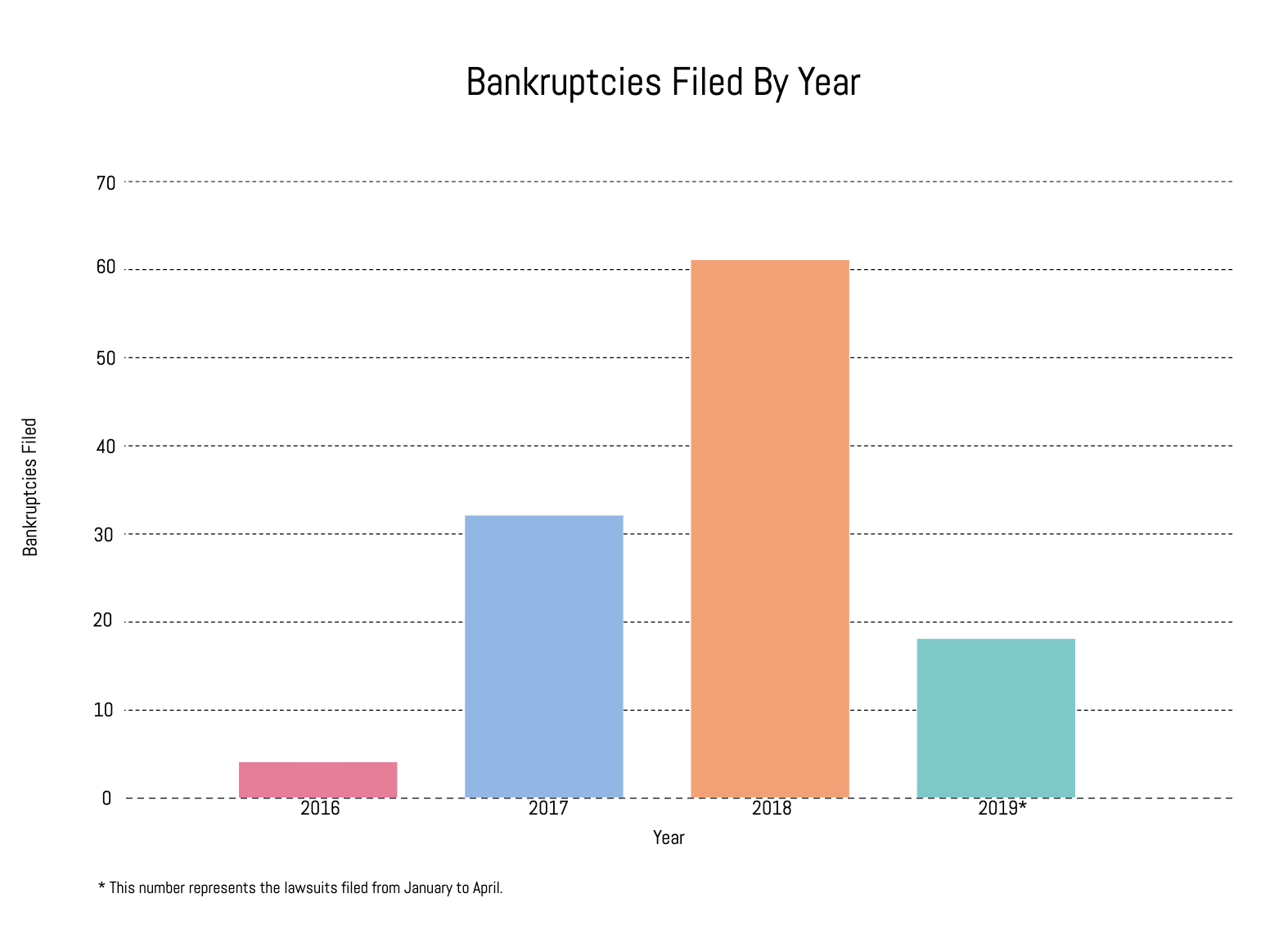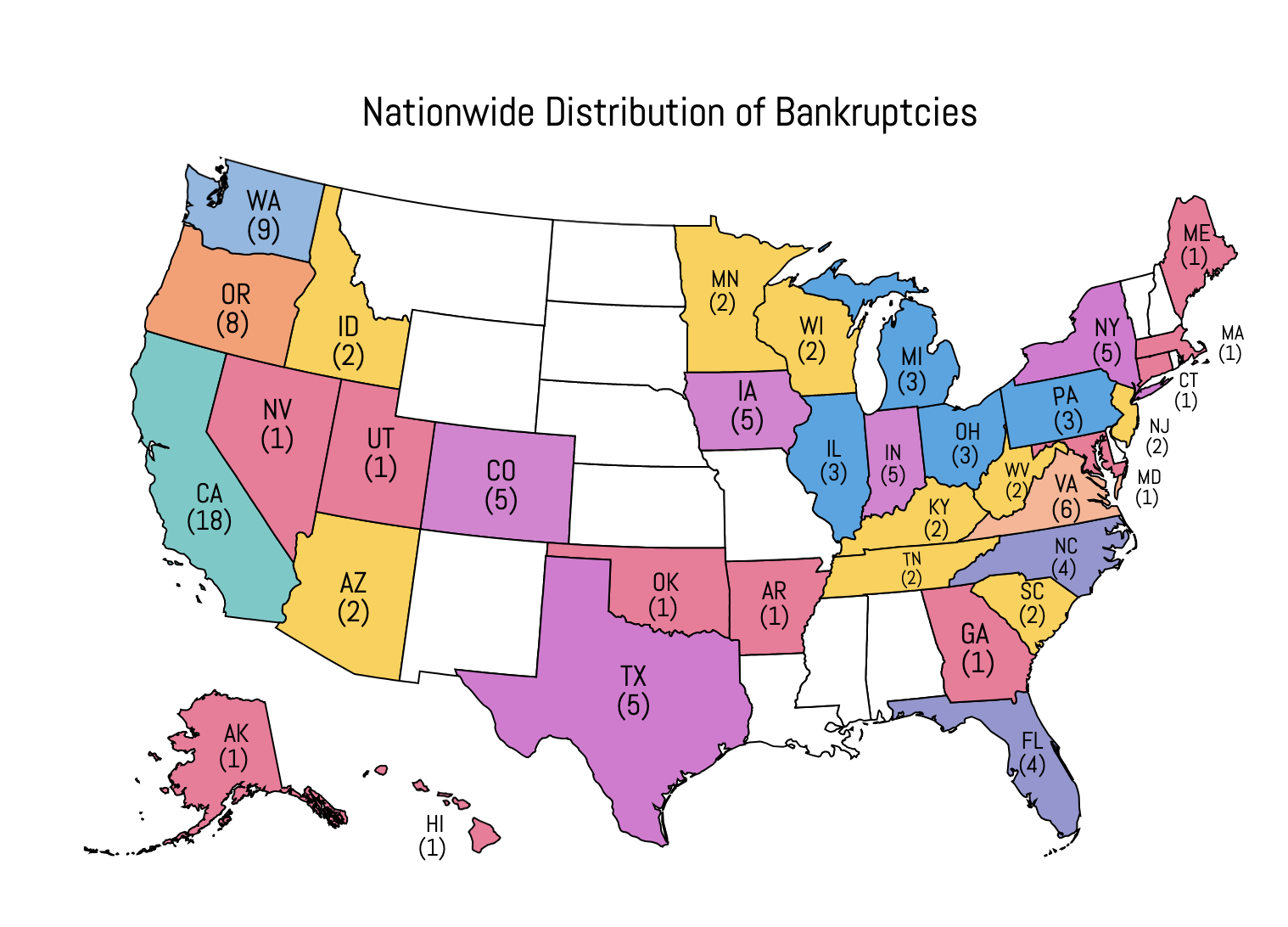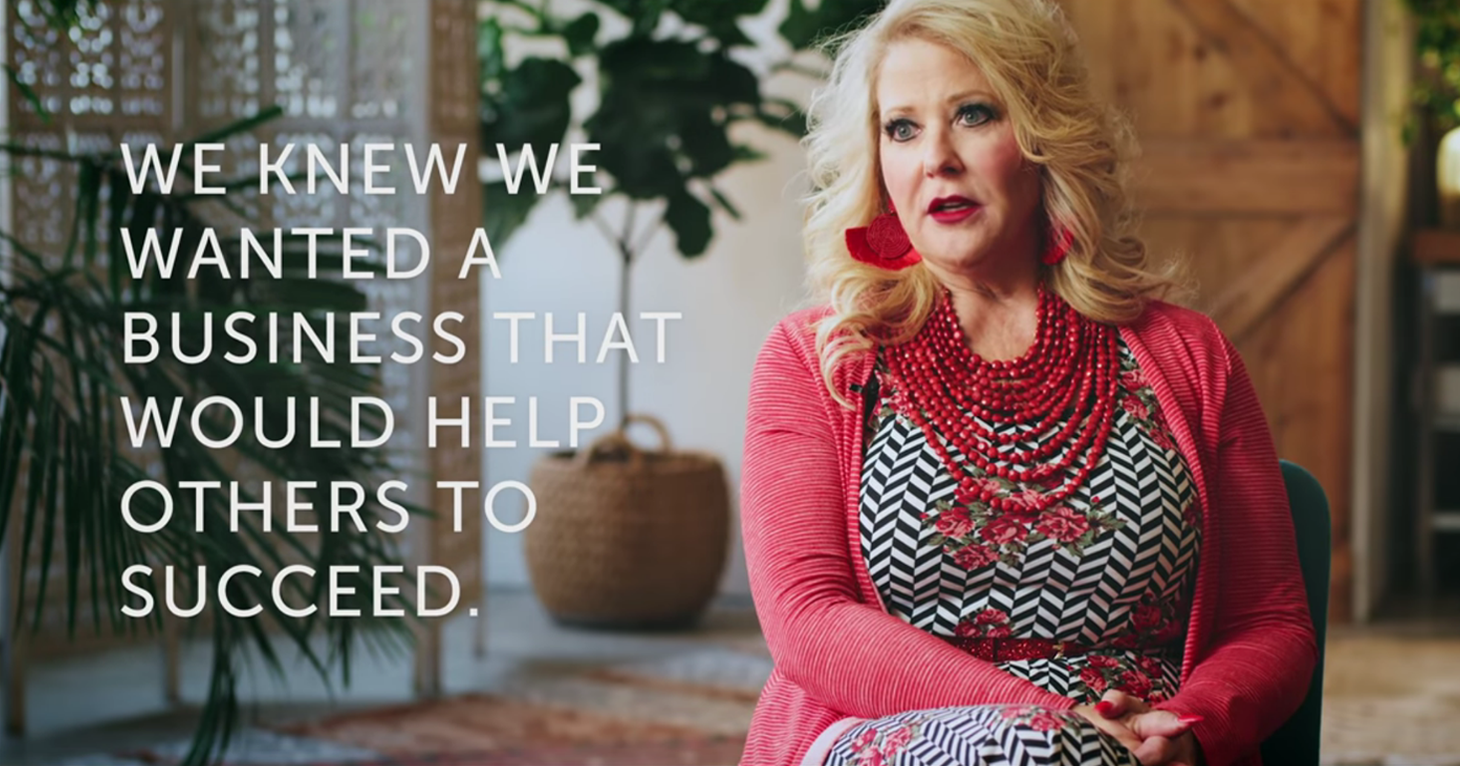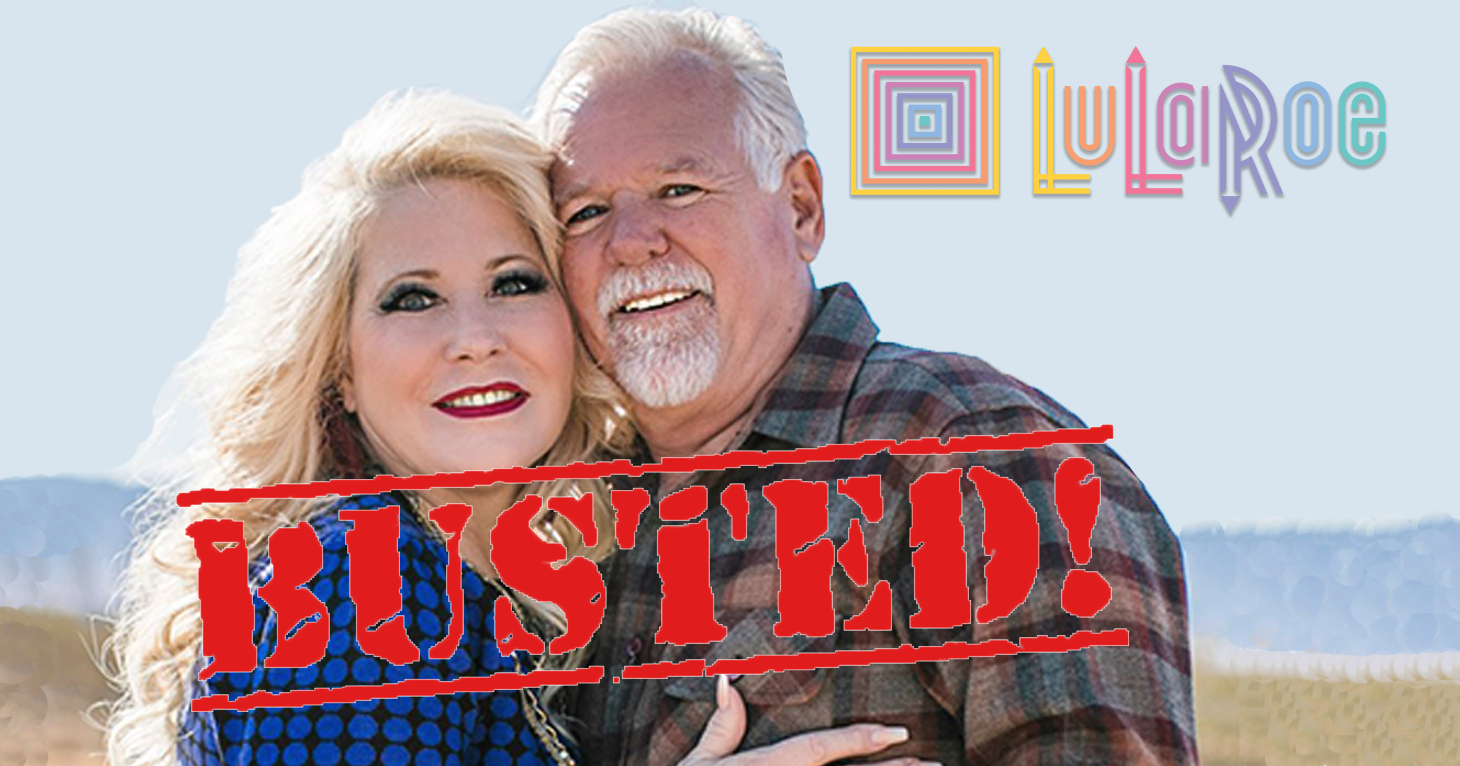
The Cost of Doing Business
Comparing the amount companies agree to pay to settle deceptive marketing charges with their annual revenue.
At least 115 current or former LuLaRoe distributors have filed for personal bankruptcy since 2016.
|
Marlie Ezarik was 10 weeks pregnant when she was asked by the founders of the Multilevel Marketing – a way of distributing products or services in which the distributors earn income from their own retail sales and from retail sales made by their direct and indirect recruits. clothing company LuLaRoe for her “why,” which in the MLM world means a distributor’s reason for joining a company. The question came while Ezarik was on stage at a LuLaRoe convention in Austin, Texas, in March 2017. Ezarik, who had enlisted as a distributor the previous summer, didn’t hesitate to answer.
“I’m about to have a baby,” she said.

Two months later, Ezarik was more than $15,000 in debt as a result of her LuLaRoe business.
It was a combination of things: difficulty selling the clothing and recruiting others to join the business, coupled with potential market saturation; a product line that Ezarik described as largely unsellable; and purchasing loads of inventory at LuLaRoe’s recommendation.
Fearing that she would not be able to afford daycare, diapers and baby wipes for her yet-to-be-born child, which would be her first, Ezarik called it quits and filed for Chapter 7 bankruptcy in May 2017, not quite a year after she launched her LuLaRoe business.
Ezarik is not alone.
Despite LuLaRoe’s stated mission to “improve lives and strengthen families … through fashion,” a TINA.org investigation has found that at least 115 current or former LuLaRoe distributors have filed for personal bankruptcy since 2016, with more than half of those filings occurring in 2018. In fact, LuLaRoe distributors are more likely to end up bankrupt than to reach the highest tier in the company’s distributor ranks. In Ezarik’s case, she never made more than a couple hundred dollars with LuLaRoe, despite sometimes working 30 hours a week on top of a full-time high school teaching job.
SEE: LuLaRoe Bankruptcy Infographic
California-based LuLaRoe enjoyed a meteoric rise after its founding in 2013. Aimed at moms and millennials like Ezarik, who is 32, the company markets itself as an economic empowerment opportunity with flexible hours that can bring in thousands of dollars in income each month. In order to attain financial freedom, distributors are required to make both a substantial initial investment ($5,000 to $11,000; Ezarik paid $5,000 for an “initial order kit” containing 284 pieces) followed by monthly purchases of clothing in order to stay qualified for all bonuses and compensation. Unfortunately, for most distributors the cost of the LuLaRoe business far outweighs its benefits. And for at least 115 distributors, the financial strain of a LuLaRoe business was a factor in filing for personal bankruptcy.

While these distributors face financial ruin, current LuLaRoe marketing materials make a multitude of false and deceptive income claims, including the misleading assertion that by joining LuLaRoe, financial freedom is attainable. LuLaRoe Founder DeAnne Stidham similarly touts the ability to achieve your “family’s financial freedom” in this video taken on her phone.
In stark contrast to LuLaRoe’s proclamations of happiness and wealth, a review of the company’s only published income disclosure statement shows that the average annual bonus paid to a LuLaRoe distributor at all ranks was just $92 (the median annual bonus was $86). Ninety-eight percent of distributors don’t even earn enough money from bonuses to recoup their initial investments. As such, it’s no surprise that many LuLaRoe distributors are financially distressed.
LuLaRoe distributors have filed for bankruptcy in 35 states (see map below), with 89 filing for Chapter 7 and 26 filing for Chapter 13. The states with the largest number of bankruptcy filings are California (18), followed by Washington state (9), Oregon (8) and Virginia (6). Colorado, Indiana, Iowa, New York, and Texas each have five bankruptcy filings.

In addition, 17 percent of these financially-distressed distributors (including Ezarik) have ties to the military, 66 percent have children and 7 percent receive Supplemental Security Income, which is designed to help the aged, blind and disabled who have little to no income.
Of the nearly 45 percent of bankrupt distributors who provided information about their inventory of LuLaRoe clothing, there was clear evidence of inventory loading (i.e., distributors reported inventories of up to $15,000 with an average of more than $4,100), which is one of the signs of a pyramid scheme. These reports are consistent with a lawsuit that was recently filed against the company and its founders by Washington state. The complaint alleges that LuLaRoe is operating an illegal pyramid scheme, and claims:
LuLaRoe’s marketing and sale activities, misleading income and lifestyle claims, emphasis on recruiting and inventory purchases over emphasis on sales to consumers outside the LuLaRoe organization, and inventory loading practices ensured that the primary business opportunity with LuLaRoe was through recruitment.
These LuLaRoe distributors are not the only ones that appear to be having difficulty meeting their financial obligations. A 29-page complaint filed in November 2018 by one of LuLaRoe’s clothing suppliers claims that the company is in a “precarious financial situation” and that the “supplier has reason to believe that [LuLaRoe is] insolvent.” The complaint goes on to allege that LuLaRoe is “indebted to numerous other vendors and suppliers that [LuLaRoe has] been unable or unwilling to pay,” including a $1 million debt to UPS.
SEE: Lawsuits Against LuLaRoe Keep Mounting
Despite racking up their own debt and leaving distributors struggling, it seems that LuLaRoe Founders Mark and DeAnne Stidham (pictured below) continue to live the high life — living in multiple homes, collecting exotic cars and owning private airplanes, according to one of its unpaid creditors.

LuLaRoe claims that it “is a unique community of social selling entrepreneurs, offering individuals the opportunity to achieve their dreams by connecting people to product.” It is a marketing message that has no basis in reality and fails to take into account the fact that the vast majority of LuLaRoe distributors will not achieve their dreams with the company. Unfortunately, for at least 115 current and former distributors, who unwittingly believed LuLaRoe’s pitch, quite the opposite has happened as they live through the nightmare of personal bankruptcy.
UPDATE 5/2/19: This article has been updated to include additional bankruptcy filings.
UPDATE 6/10/19: In response to this article, LuLaRoe contends that (1) LuLaRoe was not a factor in Ezarik’s bankruptcy petition; (2) Ezarik received a full refund from LuLaRoe for the clothing she returned after canceling her LuLaRoe business; (3) Ezarik generated over $11,000 in revenue selling LuLaRoe clothing; (4) the average U.S. consumer is more likely to file for bankruptcy than a LuLaRoe retailer; and (5) the allegation that LuLaRoe owes $1 million to UPS is false. TINA.org disputes LuLaRoe’s contentions regarding Ezarik, and maintains that the statements in the article are supported by data, including Ezarik’s own statements. With respect to LuLaRoe’s contention regarding bankruptcies filed by the average U.S. consumer, TINA.org takes no position as such a comparison is not relevant to the issues presented in the article. With respect to LuLaRoe’s contention regarding the alleged UPS debt, TINA.org takes no position as the article accurately describes the allegations made in a lawsuit filed against LuLaRoe by one of its suppliers.
Find more of our coverage on LuLaRoe here.
Comparing the amount companies agree to pay to settle deceptive marketing charges with their annual revenue.
TINA.org alerts Washington AG’s office to deceptive income claims and more.
Settlement avoids a trial that had been scheduled to begin on Feb 16.


